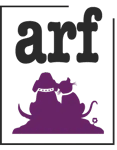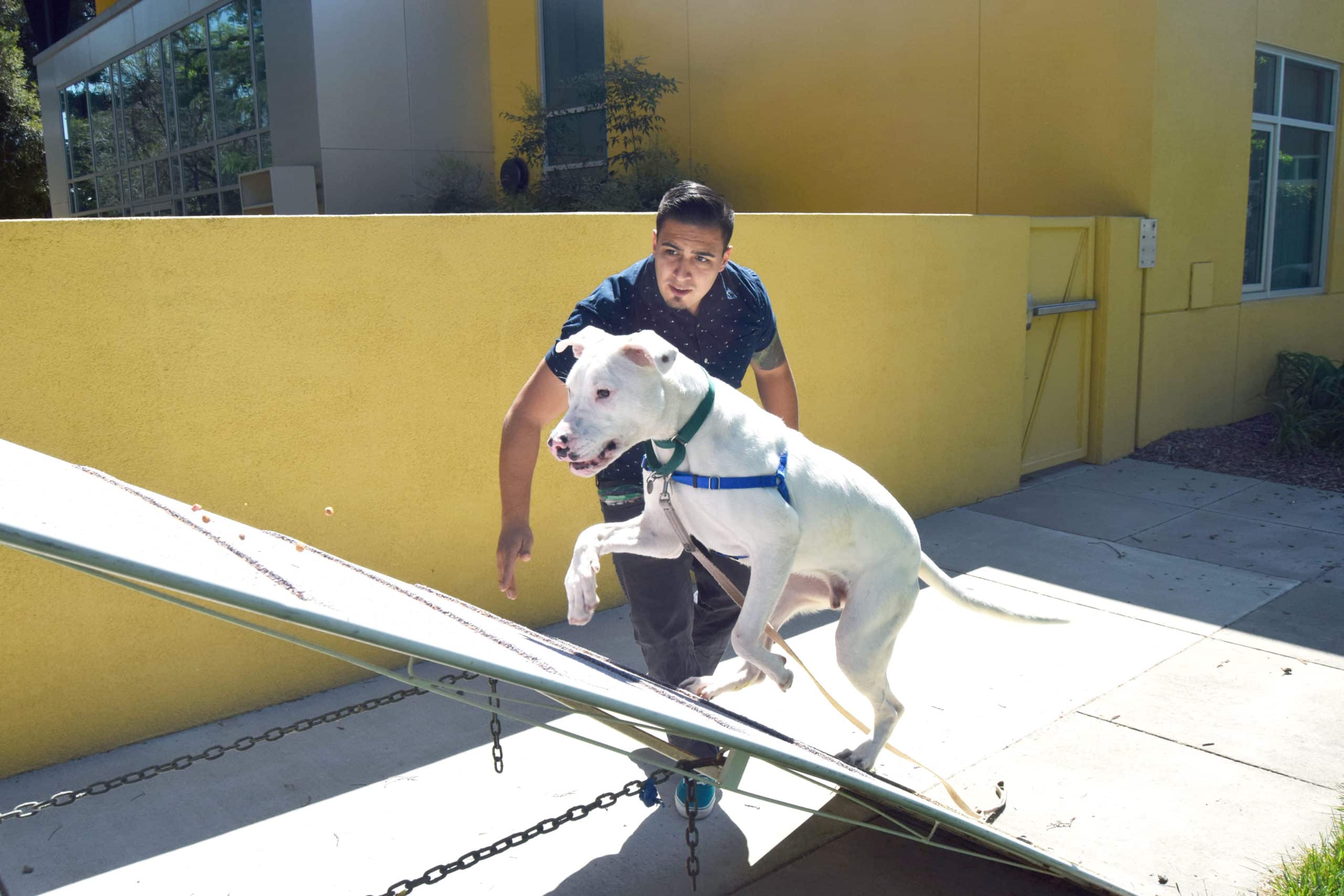
The Canine Good Citizen™ (CGC) Test was created by the American Kennel Club (AKC) to highlight and recognize dogs who display excellent manners.
Whether you’re starting your dog’s journey to advanced training as a service animal, looking to join our Pet Hug Pack® team of therapy animals, or just want to take your bond with your dog to the next level, earning a CGC ribbon is a great step!

The Ten Items on the Test
Here is a preview of the ten items the CGC Test includes. Handlers are welcome to use praise and encouragement and may also pet their dog between exercises. However, food, treats, and toys are not permitted during testing.
#1: Accept a Friendly Stranger
- Stranger approaches and speaks to handler.
- Stranger ignores dog.
- Dog starts seated at handler’s side, but may move into a down or stand.
- Stranger and handler shake hands, exchange pleasantries, then continue on.
- Dog shows no resentment, shyness, or aggression.
- Dog cannot jump on stranger.
#2: Sitting Politely for Petting
- Evaluator approaches and asks to pet dog.
- Evaluator pets dog on head and body.
- Dog starts seated at handler’s side, but may stand during test.
- Handler may talk to dog throughout test.
- Dog shows no resentment, shyness, or aggression.
- Dog may not struggle or pull away, but may move slightly forward.
#3: Appearance and Grooming
- Evaluator inspects dog for cleanliness and grooming.
- Evaluator combs or brushes dog, lightly examines ears, and gently picks up each foot.
- Handler may hold feet and head.
- Dog may move throughout test.
- Handler may talk to dog throughout test.
- Dog should not avoid or struggle, but may wiggle.
#4: Loose Leash Walking
- Dog may be on either side of handler.
- Must do a right turn, left turn, and an about turn.
- One stop in between and one at the end.
- Handler may talk to dog and give praise throughout.
- Handler may command sit at the stop if wanted.
- Dog should not constantly pull, excessively sniff, or ignore handler’s turns.
#5: Walking Through a Crowd
- Dog and handler walk around and pass through a crowd of three or more people.
- Dog may show interest but must continue walking with handler.
- Dog cannot show any shyness, resentment, or over-exuberance.
- Dog may sniff briefly, but must move on.
- Dog may not jump on people or strain on leash to go to them.
- Dog should not hide behind handler.
#6: “Sit,” “Down,” and “Stay” on Command
- 20-foot-long line is attached to dog.
- Handler commands both sit and down, and then commands stay in one of those positions.
- Handler walks to end of leash while dog stays in sit or down, then turns around and walks back at a reasonable pace. Dog cannot get up until released.
- Praise, body language, and encouragement may be used.
- Multiple commands and gentle touch may be used to guide dog into position.
#7: Coming When Called
- 20-foot-long line is attached to dog.
- Handler walks 10 feet away, turns toward dog, and calls dog.
- Praise, body language, and encouragement may be used.
- Handler may command dog to stay or just walk away. Dog may standing or in sit or down position.
- This is not meant to test stay. Evaluator may distract dog to keep them busy so handler can command come.
#8: Reaction to Another Dog
- Two handlers with dogs approach each other, stop to shake hands, exchange pleasantries, and continue on.
- Dog may show casual interest and may move slightly toward other dog, but must stay back.
- Dog may sniff and stretch their neck toward the other dog/handler.
- Dog may sit, down, or remain standing during encounter, but must not cross in front of the handler to get the other dog.
- Handler may talk to dog throughout interaction
#9: Reaction to Distractions
- Evaluator selects two distractions. Examples:
- A person using a wheelchair, walker, or crutches.
- A sudden opening or closing of a door.
- Loudly dropping a pan or folded chair.
- A jogger or bike rider.
- A person pushing a shopping cart.
- Any other similar distractions of this nature.
- Dog may show interest.
- Dog may jump but not panic.
- Constant barking is unacceptable.
#10: Supervised Separation
- Evaluator holds leash while guardian goes out of sight for three minutes.
- Evaluator may pet and talk to the dog, but not excessively.
- Dog may be in any position.
- Dog may not panic or pull excessively.



